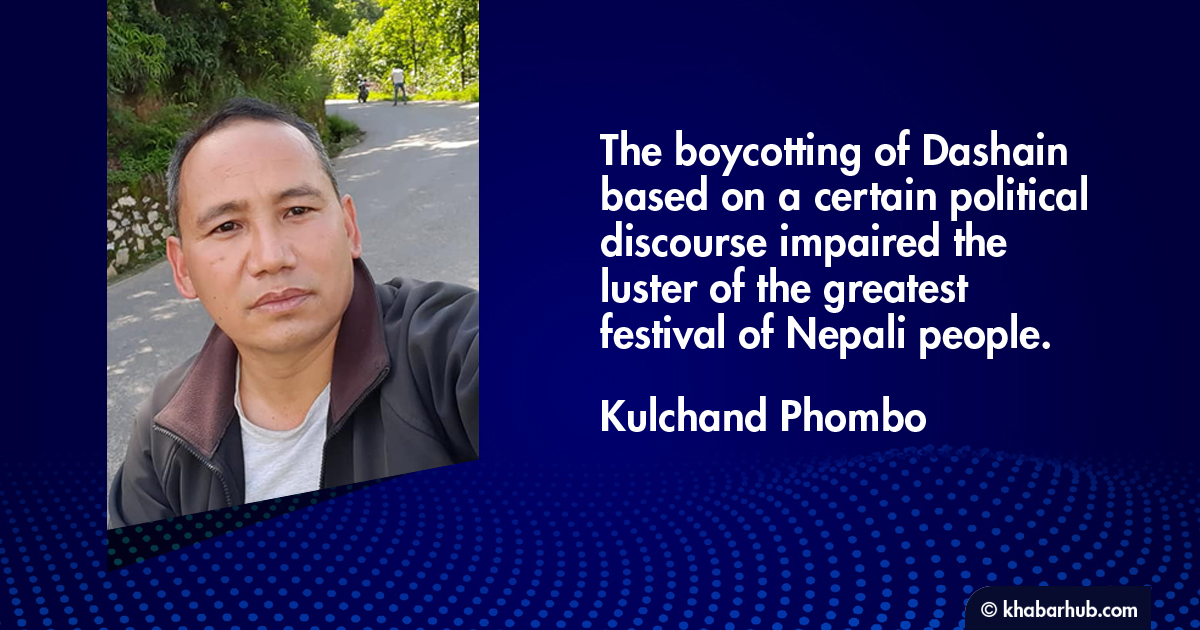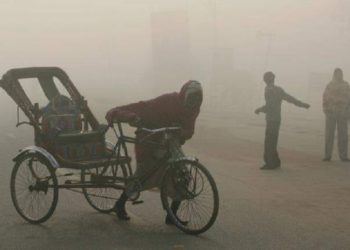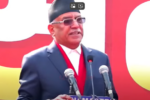When I was a little kid my headteacher said the Dashain festival was a thing meant for me, hinting that it was a festival especially enjoyed by children, not adults like him.
I was hardly 10 years then – a fifth-grader at Ram Lower Secondary School based in Aatharai rural municipality-1 under the new local restructuring.
I felt a bit embarrassed even though, I know, he did not mean to hurt me by his remark. The day was Ashtami, the eighth day of Bada Dashain.
Even though I cannot remember the exact year, what vividly comes into my memory is a group of villagers sitting in the courtyard of headteacher Basudev Gautam and shuffling and dealing out a pack of cards for entertainment.
Of course, my childish mood was already festive with relatives and friends of my circle hanging around a ‘Linge Ping’ (a traditional swing built with bamboos) in the vicinity of my house wearing newly stitched Dashain clothes.
Well before the day of Ashtami, people had already decorated their houses in white and red clay in a special pattern with doors and windows blackened with soot, or with used torchlight batteries.
Even though this discourse, to some extent, helped members of the non-Hindu community to stand united, it could not hold good for a long time since they soon started indulging in foreign cultures such as birthday and the new year celebrations by boycotting the home-grown cultures and festivals.
To make the festival even more lively and joyous, a local entertainer (locally called Kanchha Darjee) used to visit from one house to the other in the village beating a musical instrument tyamko (kettledrum) from Ghatasthapana to Navami.
This typical kind of musical instrument does still resonate deep into my heart and makes me feel quite nostalgic and pine for those childhood days.
We, together with elder and younger sisters, used to clean the courtyard, alleys, and trails and had to travel a few kilometers away in a stream Nuniyakhola to fetch white clay to coat the house.
The decoration of the house used to take place every year a few days before the day of Ashtami.
As the Nepali month Ashwin approached, every passing day was a moment of joy with a sweet feeling that Tika, the main day of the festival, was not far away.
During the period, in the village, there were no tailoring houses as are available in the urban area.
Villagers had to depend on a local tailor who used to make clothes for the members of a family and receive paddy or cereal in return, called ‘Bali’ once a year (as a farmer reaps the harvest).
Blessings from seniors, delicious food items (especially meat items), rice beer, bamboo swings and new clothes and visits to maternal uncle’s house were the main attractions of the Dashain festival in the village then.
As time elapsed by, the country underwent several political upheavals and turmoils. The People’s Movement in 1990 brought forth the Constitution of the Kingdom of Nepal, 2047 BS (1990), guaranteeing fundamental rights for the people.
With the constitutional provision ensuring freedom of speech and allowing citizens to register political parties, and unions, some ethnic communities (non-Hindus) stopped celebrating Dashain arguing that it was not their festival.
Indigenous ethnic groups especially Rai, Limbu, Gurung, Tamang and Sherpa started following their own festivals for the sake of their identity.
However, these assurances proved to be a false discourse over time and it appeared that they had been used to merely involve these ethnic minorities in the insurgency to their advantage.
Rai and Limbu, Sunuwar and Yakkha started following Chasok Tangnam or Udhauli/Ubhauli as their festival while Gurung, Tamang and Sherpa started observing Lhosar. But, since these festivals are observed by certain ethnic communities, they could not become a thing of joy as the Dashain festival used to be.
The boycotting of Dashain based on a certain political discourse impaired the luster of the greatest festival of Nepali people.
Even though this discourse, to some extent, helped members of the non-Hindu community to stand united, it could not hold good for a long time since they soon started indulging in foreign cultures such as birthday and the new year celebrations by boycotting the home-grown cultures and festivals.
This sentiment was further exploited by the Maoists during a decade-long insurgency for their own ends by inciting the already chagrined feelings of the backward and ethnic communities sweet-talking that they would help establish their identity through the preservation of their cultures and customs.
They even did not refrain from assuring that the federal states would be carved along the ethnic lines.
However, these assurances proved to be a false discourse over time and it appeared that they had been made to merely involve these ethnic minorities in the insurgency to their advantage.
Now, the question arises is it worth celebrating foreign cultures such as birthday and new year celebrations against the home-grown festival such as Dashain?









Comment